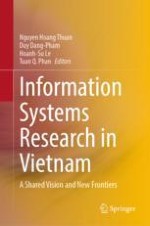2023 | OriginalPaper | Chapter
Protecting Organizational Information Security at Home During the COVID-19 Pandemic in Vietnam: Exploratory Findings from Technology-Organization-Environment Framework
Authors : Duy Dang-Pham, Hiep Pham, Ai-Phuong Hoang, Diem-Trang Vo, Long T. V. Nguyen
Published in: Information Systems Research in Vietnam
Publisher: Springer Nature Singapore
Activate our intelligent search to find suitable subject content or patents.
Select sections of text to find matching patents with Artificial Intelligence. powered by
Select sections of text to find additional relevant content using AI-assisted search. powered by
